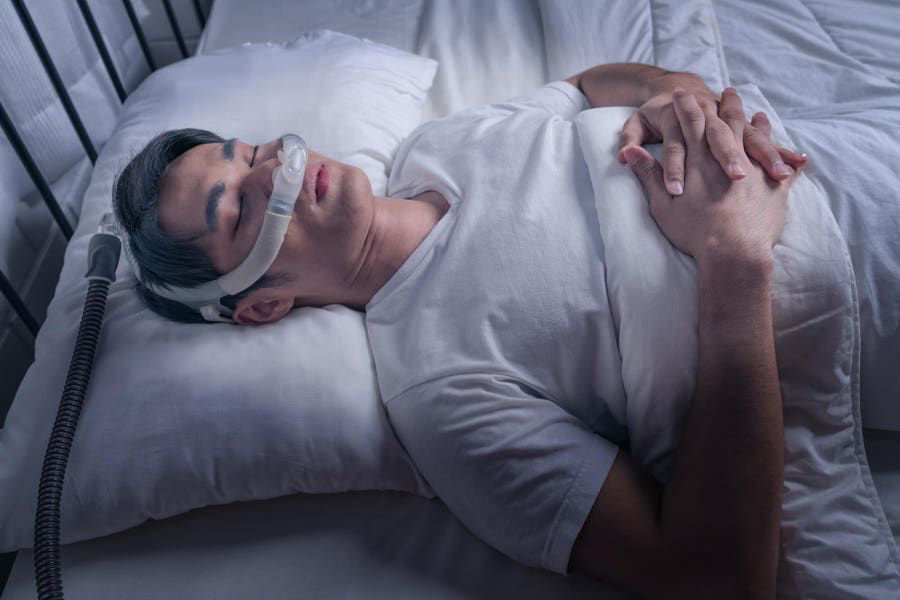The Top Benefits of Modafinil for Obstructive Sleep Apnea Patients
Obstructive Sleep Apnea (OSA) is a prevalent sleep disorder characterized by repeated interruptions in breathing during sleep, leading to poor sleep quality and excessive daytime sleepiness. While Continuous Positive Airway Pressure (CPAP) therapy remains the standard treatment for OSA, it does not always alleviate daytime sleepiness for all patients. Modafinil, a wakefulness-promoting agent, has emerged as a significant adjunct treatment for managing OSA-related daytime sleepiness.
The Challenge of Daytime Sleepiness in OSA
Daytime sleepiness is a common and challenging symptom of OSA, significantly affecting patients’ quality of life. Even with CPAP therapy, some patients continue to experience persistent sleepiness, which impacts daily functioning and cognitive abilities. Examining the limitations of current treatments highlights the need for more effective solutions to address daytime sleepiness in OSA patients.
Overview of Modafinil
Modafinil is approved for treating excessive sleepiness associated with OSA, narcolepsy, and shift work sleep disorder. Unlike traditional stimulants, Modafinil’s mechanism of action is distinct, promoting wakefulness by affecting several neurotransmitter systems in the brain, including dopamine and noradrenaline pathways. This section provides an overview of Modafinil’s development, mechanism, and unique position in sleep disorder management.
Efficacy of Modafinil in Treating OSA-Related Daytime Sleepiness
Extensive research and meta-analyses have demonstrated Modafinil’s effectiveness in reducing OSA-related daytime sleepiness. Studies indicate significant improvements in both objective wakefulness tests, such as the Maintenance of Wakefulness Test (MWT), and subjective sleepiness scales, like the Epworth Sleepiness Scale (ESS). This section summarizes key findings from systematic reviews, highlighting Modafinil’s impact on enhancing wakefulness and reducing daytime sleepiness in OSA patients.
Safety Profile and Tolerability of Modafinil
Modafinil is generally well-tolerated by patients with obstructive sleep apnea. Clinical trials and systematic reviews have investigated its side effects and overall safety, finding that while Modafinil may lead to mild to moderate side effects such as headache, nausea, and insomnia, its adverse event profile is relatively benign compared to traditional stimulants. Importantly, the incidence of serious adverse events, hospitalizations, or deaths did not increase significantly among OSA patients treated with Modafinil. This section discusses the drug’s safety considerations and how they compare to placebo and other treatments for daytime sleepiness.
Patient Experiences and Quality of Life Improvements
Patient testimonials and clinical research underscore the positive impact of Modafinil on the quality of life for individuals with OSA. Users report significant enhancements in daily functioning, cognitive performance, and overall mood. Moreover, studies have shown that improvements in wakefulness and reductions in daytime sleepiness correlate with better performance in work and social settings, underscoring the drug’s role in improving patient well-being. This section highlights personal stories and clinical data to illustrate the life-changing benefits Modafinil can offer to those struggling with sleep apnea-related fatigue.
Modafinil as an Adjunct to Standard OSA Treatments
While CPAP therapy addresses the root cause of OSA by maintaining open airways during sleep, Modafinil offers additional relief from the symptoms of excessive daytime sleepiness. This synergistic approach allows for a more comprehensive management of OSA, particularly for patients who continue to experience sleepiness despite optimal CPAP use. Clinical guidelines increasingly recognize Modafinil’s role in this context, recommending its consideration as part of a holistic treatment plan for sleep apnea. This section explores how Modafinil complements CPAP therapy and discusses considerations for its integration into patient care plans.
Future Directions and Considerations
The promising results of Modafinil in the treatment of OSA-related daytime sleepiness open avenues for further research and clinical application. Long-term studies are needed to fully understand the implications of sustained Modafinil use, including its impact on cardiovascular health, cognitive function, and quality of life over time. Additionally, ongoing exploration into the drug’s mechanism of action may reveal new therapeutic targets for sleep disorders. This final section considers the future of Modafinil in sleep medicine, emphasizing the importance of continued research, patient education, and thoughtful clinical practice to maximize the benefits of Modafinil for those suffering from obstructive sleep apnea.
Conclusion
Modafinil has emerged as a pivotal adjunct treatment for managing excessive daytime sleepiness associated with obstructive sleep apnea (OSA), offering significant benefits for patients who remain symptomatic despite the use of standard therapies like CPAP. Its unique mechanism of action and favourable safety profile distinguish Modafinil from traditional stimulants, making it a valuable option for enhancing wakefulness and improving quality of life in OSA patients.
Clinical evidence supports Modafinil’s efficacy in reducing daytime sleepiness, with improvements noted in both objective wakefulness tests and subjective sleepiness scales. Patients report enhanced daily functioning, increased alertness, and overall better quality of life, underscoring the drug’s impact beyond its wakefulness-promoting effects.
While Modafinil is generally well-tolerated, its integration into treatment plans should be carefully considered, taking into account individual patient needs and potential side effects. The synergy between Modafinil and CPAP therapy represents a comprehensive approach to managing OSA, addressing both the underlying cause and its pervasive symptom of daytime sleepiness.








